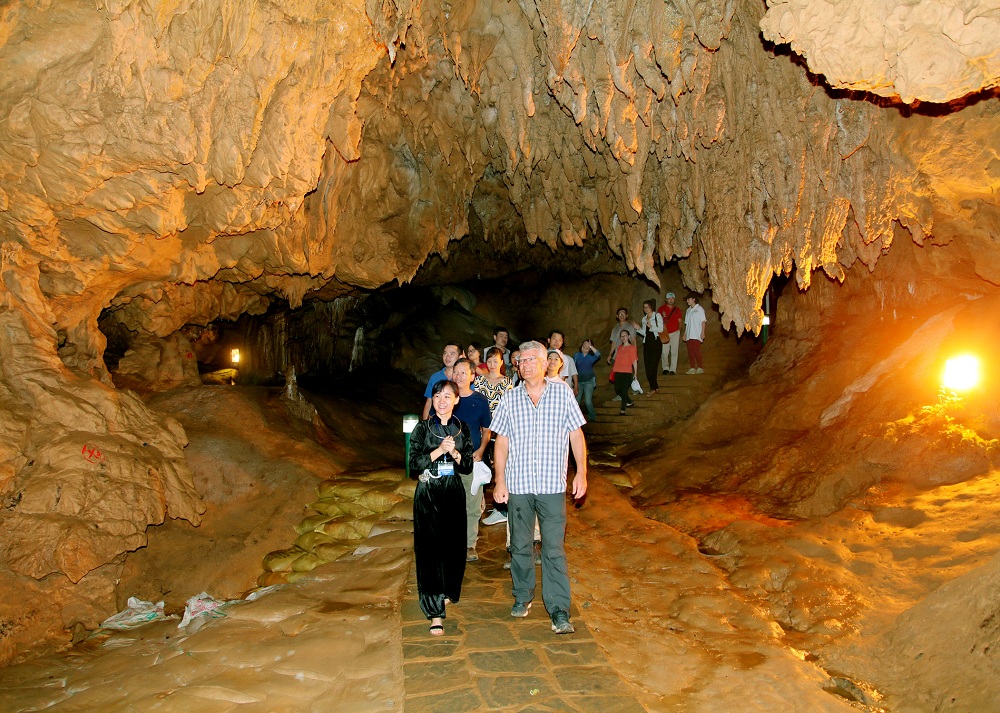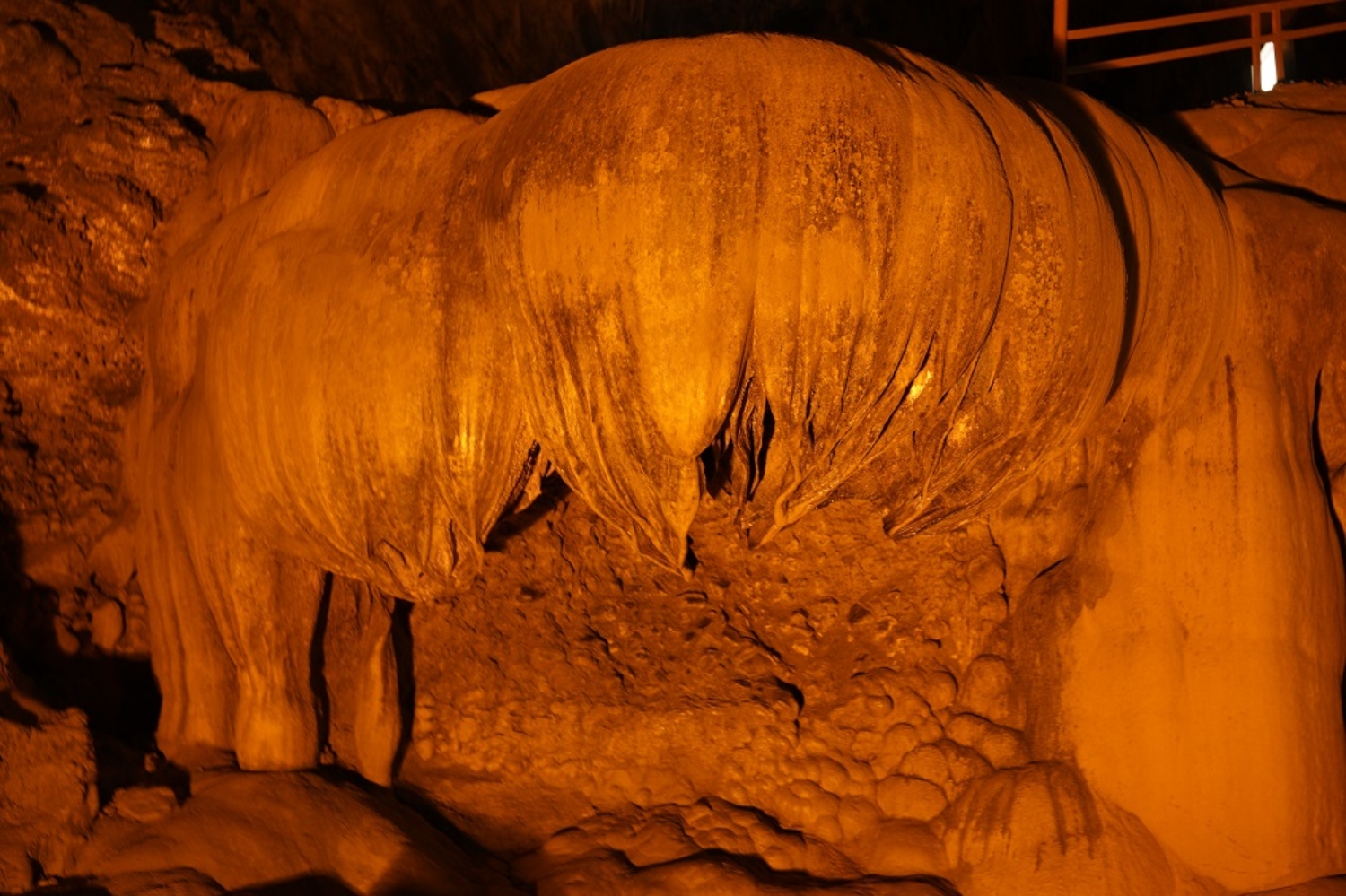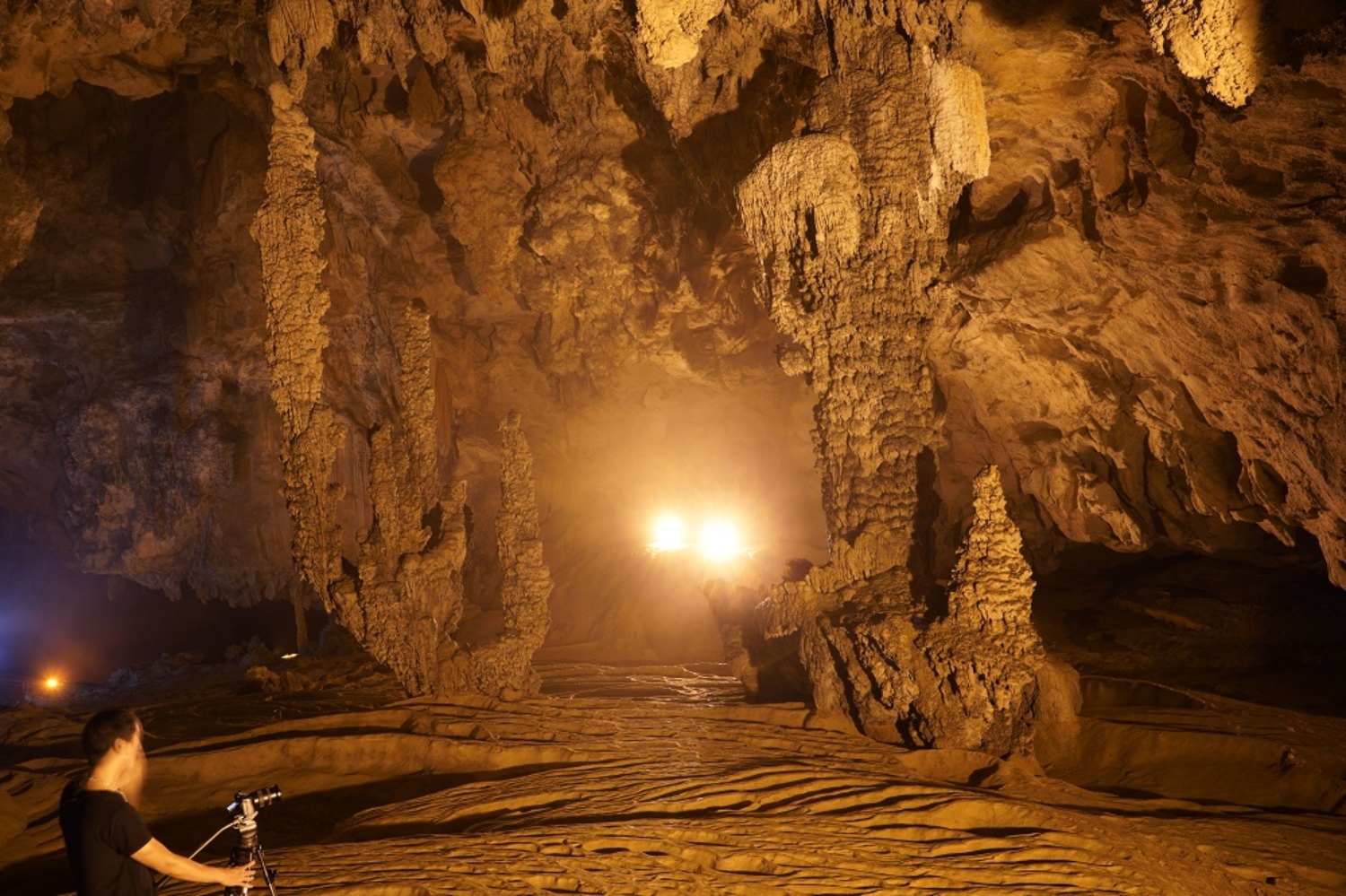NGUOM NGAO CAVE



Located in Gun village, Dam Thuy commune, Trung Khanh district, and commonly described as the most beautiful cave in Vietnam, Nguom Ngao cave (Tiger cave in Tay language) was discovered in 1921 and developed for tourism in 1996. It is recognized as a national scenic spot pursuant to Decision No.95/QD-BVHTTDL of January 24th 1998 of the Ministry of Culture, Sports and Tourism.
Nguom Ngao cave is developed inside a limestone massif that was formed in an ancient sea about 400 million years ago, containing many Coral and Crinoid fossils. The surrounding karst terrain is peak cluster-depression located on a planation surface at an altitude of 400-600m asl, with many hanging valleys and sinkholes. The cave has several branches trending generally in a NW-SE direction. Within the cave are various chambers, floors, steps and lobbies of many sizes. Speoleothems of various forms are abundant, imitating corals, ships, gold and silver cascades, upturned lotus flowers, individual rock pillars and terraced rice fields. An underground stream with gravel deposits several meters thick flows to the Quay Son river. Its echoing sounds, like the roar of tiger, give the cave its name - Nguom Ngao.
The cave section, which was surveyed by the British Speleological Association in 1995, is 2,144 m long and has three main entrances: Nguom Ngao, Nguom Lom and Ban Thuon. According to the survey results of the Vietnam Institute of Geosciences and Mineral Resources (2016), Nguom Ngao cave has an overall length of 2,769.6m and is 61.1m deep, with two floors: one active at stream level and the another dry,about 50m above the stream. The cave has five entrances at altitudes of 420-507m asl.
Currently the cave Management Board has opened only one section of 945.8m with two entrances for tourism but there is a plan to expand this in future.
Reader Comments
Newer articles
Older articles


